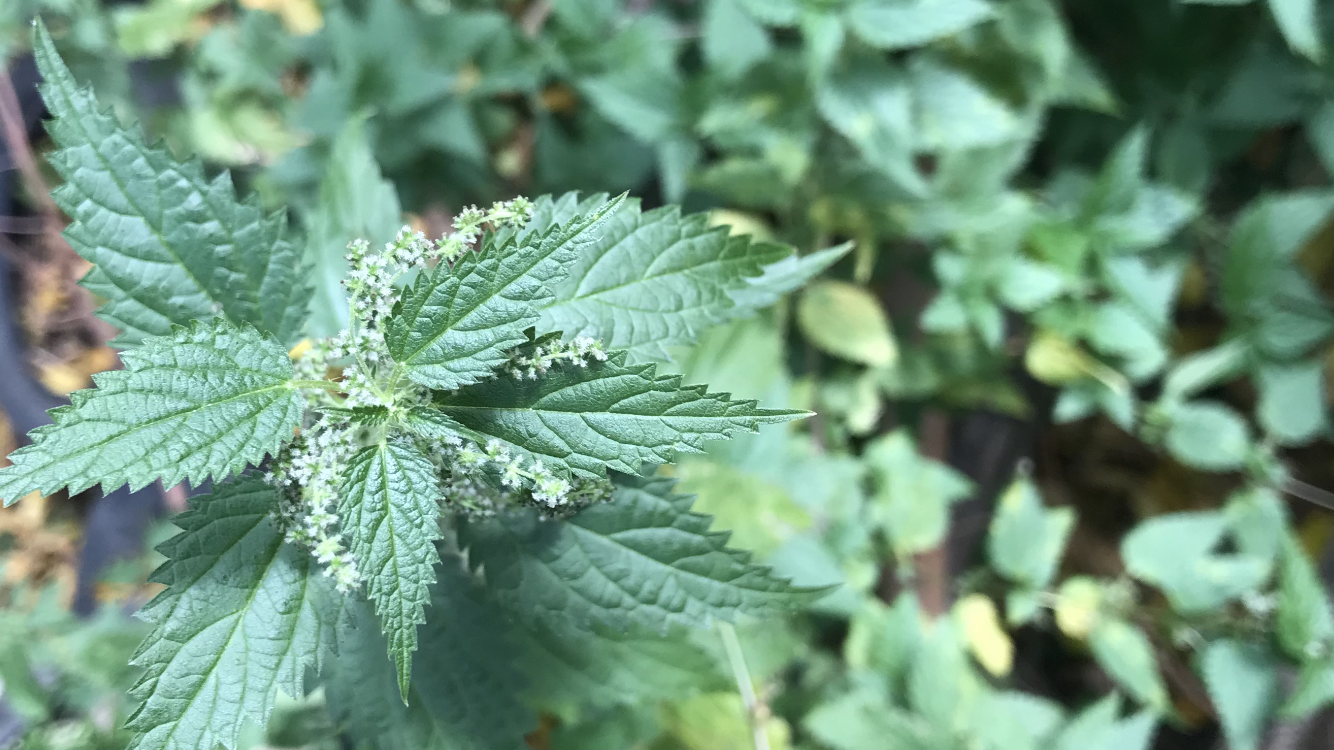Lunar Gardening for the Home Herbalist

Growing Herbs by the Moon
Growing medicinal & culinary herbs for personal use is a starting point for many home gardeners, extremely enjoyable, and can be very cost-saving. Lunar planting has a lot to offer the home herbalist. Personally, I find that paying attention to the rhythms of the moon helps me to get in touch with my garden in a similar way that practicing herbalism helps me get in touch with my body.
Which sign an herb should be planted under has a lot to do with the why of the growing. The best phase and sign for you to plant your herb garden under depends not only which plants you are planting, but what part of the plant you intend to eventually harvest—leaf, stem, flower, seed, fruit, or root. Some herbs (for instance, coriander) can be grown for multiple parts and it is up to you what you want to encourage.
Medicinal, Culinary, and Aromatic Herbs
The vernacular terms “herbs” in the sense of modern herbalism is a much wider category than the botanical “herbaceous plants,” and describes flavorful, aromatic plants used for medicine, food, and sensory enjoyment across the world. The category includes not only true herbs like basil or mint, but also a variety of annuals, biennials, and perennials alongside woody shrubs like elderberry and trees such as willow and slippery elm.
Phases of the Moon
Plant herbs under the first and second quarter if you’re looking for aerials—leaves, stems, flowers, fruits, or seeds. The entire waxing half is a fertile planting time, but if you want to get even more specific, the first quarter is best for leaves, stems, and flowers while the second quarter is more advantageous for fruits and seeds. The first quarter is also recommended for taking cuttings, cloning, and grafting.
The waning moon is the best time to plant for root crops or strong root growth, particularly the third quarter. The fourth quarter is ideal for anything having to do with the soil—fertilizing, deep watering, mulching, weeding, or bed prep.
>>Click here for more information about the moon’s impact on gardening>>
Finding Reliable Information on Medicinal Herbs
One option is to look for a professional herbalist or naturopath. Depending on where you live, there may be licensed herbalists, but in the United States there are not. There are opt-in registries such as the American Herbalists Guild you can search, or you can ask people in your community if they have a recommendation. Naturopath certification varies by state. If seeing a professional is what you choose, it will save you a lot of time in research but will probably be more costly, and you will have to decide for yourself how to choose someone trustworthy.
You can take a class on herbalism, whether at a local herbalist’s school or by correspondence.
Another option is books. Books can and do contain typos, misprints, or just plain wrong information, but they usually go through more layers of editing and fact checking before publication than internet resources, and as a result, they are overall more reliable. (If you can’t find them at the library, used books can be found on websites like ThriftBooks or AbeBooks for affordable prices. And no, I’m not sponsored in any way—just love old books!) A few books I have in my home library are:
- The Green Pharmacy – James A Duke
- Prescription for Nutritional Healing – Phyllis A Balch
- The Healing Herbs – Michael Castleman
- Family Herbal – Rosemary Gladstar
One internet source many people still rely on is the English translation of Germany’s Commission E. They have not been updated since 1994, but they do include thorough chemical information, which herbs are approved or disapproved for prescription in Germany, dosages, contraindications, and drug interactions.
Medicinal Herbs Grown for Their…
| Leaves | Stems | Flowers | Fruit | Seeds | Roots |
|---|---|---|---|---|---|
|
|
|
|
|
|
Planting Herbs by the Signs
Planting herbs in the first quarter under Taurus is recommended for hardiness. Herbs grown for their roots, like marshmallow and licorice, do well when planted under earthy Taurus, or in the third quarter.
Most culinary herbs are grown for their leaves. For an abundance of leaves (and everything else), plant under a waxing Cancer moon.
Virgo often stands out as being the only barren earth sign, but this is where Virgo has a change to shine! Virgo is recommended for growing medicinal herbs and flowering vines. (Hops is both!)
Many herbs, like calendula, chamomile, and lavender, are grown for their flowers, which are eaten, drunk as tea, and enjoyed dried around the house. Libra, the best sign for anything to do with flowers, is recommended and when Libra is in the waning moon, especially the third quarter, it is a good time to transplant, or to plant flowers for root growth. (Full moon in Libra is another good time to plant herbs for seed.)
Plant herbs under Scorpio for all-around sturdiness.
Whether you’re growing herbs for culinary or medicinal use, herbs grown for seed, like coriander, fennel, fenugreek, and mustard, are best planted under the waxing moon and when the moon is in Capricorn, if possible.
Plant under Pisces to encourage abundance, strong root growth, and drought hardiness.

Hallmarks of a Reliable Source
They give a bibliography—if they don’t tell you anything about where the information comes from, that’s a red flag! If they direct you to reputable books on herbalism or cite scholarly sources, that’s a good sign.
They tell you a herb’s contraindications. Very few if any herbs are safe to use for all people in all situations. A good source on medicinal herbs will tell you when NOT to use it. They may not be safe for people with certain medical conditions, they may interact with a prescription medicine in an unsafe way or even block the absorption of other herbs/medicines. Some herbs have to processed at high temperature to be safe to take, some can only be taken for a short time, and on and on. If a book, website, or acquaintance only tells you when to take an herbs and never to not take an herb, ask questions.
A very detailed source may tell you the mechanism, i.e., which chemical compound in the herb is acting on your body and how. (Example: the formic acid and histamine in nettle leaves increase blood circulation in the skin when fresh leaves are rubbed on the skin—painful for many, but a powerful relief of arthritic pain for others.)
The author is listed by name, and their relevant credentials and background are given. Look for practicing herbalists, doctors, and people who list their own teachers by name. Be wary of people who list off degrees and certifications but none of them seem related to herbalism.
No AI! Despite the name, there is nothing “intelligent” about these programs; they simply scrape data off the internet and regurgitate it, often with dangerously inaccurate results.
Before you start using any new medicinal herb, consult your doctor or licensed healthcare professional. Even kitchen herbs can have unwanted side effects when used in large quantity.
Harvest Carefully for Best Longevity
Any good herbalist will tell you your herbs are only as helpful are they are potent—full of the essential oils and chemical bodies that work in our bodies on a cellular and sub-cellular level. The timing and method of harvest, cleaning, processing, and storage can make a big difference in both the potency and shelf-life of your home grown herbs.
The “timing” of harvest refers to not only the point in plant’s life cycle and the moon’s phase/sign, but also to the time of day. Many experienced herbalists have recommended to me to harvest after the dew dries but before the plant starts to wilt under strong afternoon sun. Most people say this is midmorning, but having gardened in both high desert and temperate rainforest, I would say the precise time of day varies. Where I live now, the dew may not dry until noon or later on a cloudy day, but when I was based in New Mexico, plants could begin wilting by 9 or 10 am in the summer.
Signs for Harvest
The signs for harvest are the same whether your herbs are intended for medicinal, culinary, or sensory use.
When harvesting aromatic leaves and flowers, look for the first quarter of the moon under one of the dry signs (Aries, Gemini, etc). Experienced lunar gardeners will notice this isn’t the usual phase for harvesting, and that’s because when harvesting vegetables for storage you want to harvest them when the energy is returning to the roots and the plant is in a bit of a lull. But when you’re harvesting herbs, you want the opposite because you are trying to capture their peak essential oils. The waxing moon draws the liquid up in the plant, and that includes the powerful oils we rely on when we work with herbs.
After you harvest, wash your herbs in cool clean water and either use or dry them as soon as possible. Herbs can be made into oils, tinctures, salves, soaps, and teas, but if you don’t have the time or space for a big project right away, drying is a great option. Again, this will depend on your environment—mostly the humidity of your environment—but generally speaking, after washing, shake the excess water off and hang in bundles to dry.
Once dry, keep your herbs in large pieces (full leaves rather than crumbled) as long as possible to preserve the longevity of the plant.
Seeds are best harvested under a waning moon and a dry sign. Wait until they reach full seed maturity on the plant. In most plants, this will be after the leaves and fruit are mature, and it’s best to let the seeds dry on the plant as long as possible. Many garden herbs hold their seeds in small disks or pods that will shatter when tapped once the seeds are ready to harvest.
Harvest roots when the plant is dormant in fall or early spring, and under a waxing-full moon and a dry sign. As with leaves, clean, process, and use or dry as soon as possible. Dry roots are VERY difficult to slice or shred, so if you can’t use them right away, get them to the size you want before drying.
© 2023 Wolf Hill Press. Please contact us for permission to reproduce.

